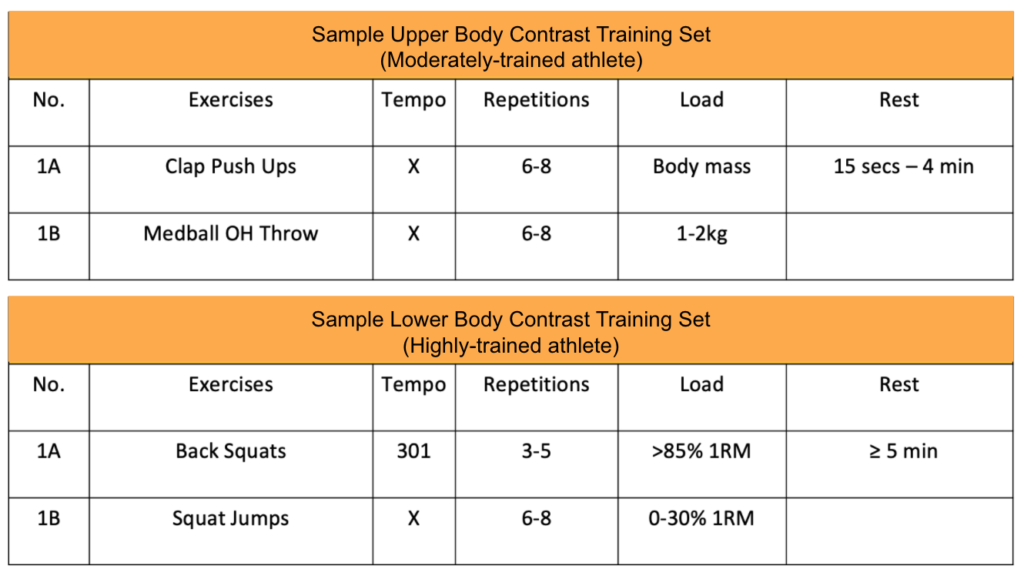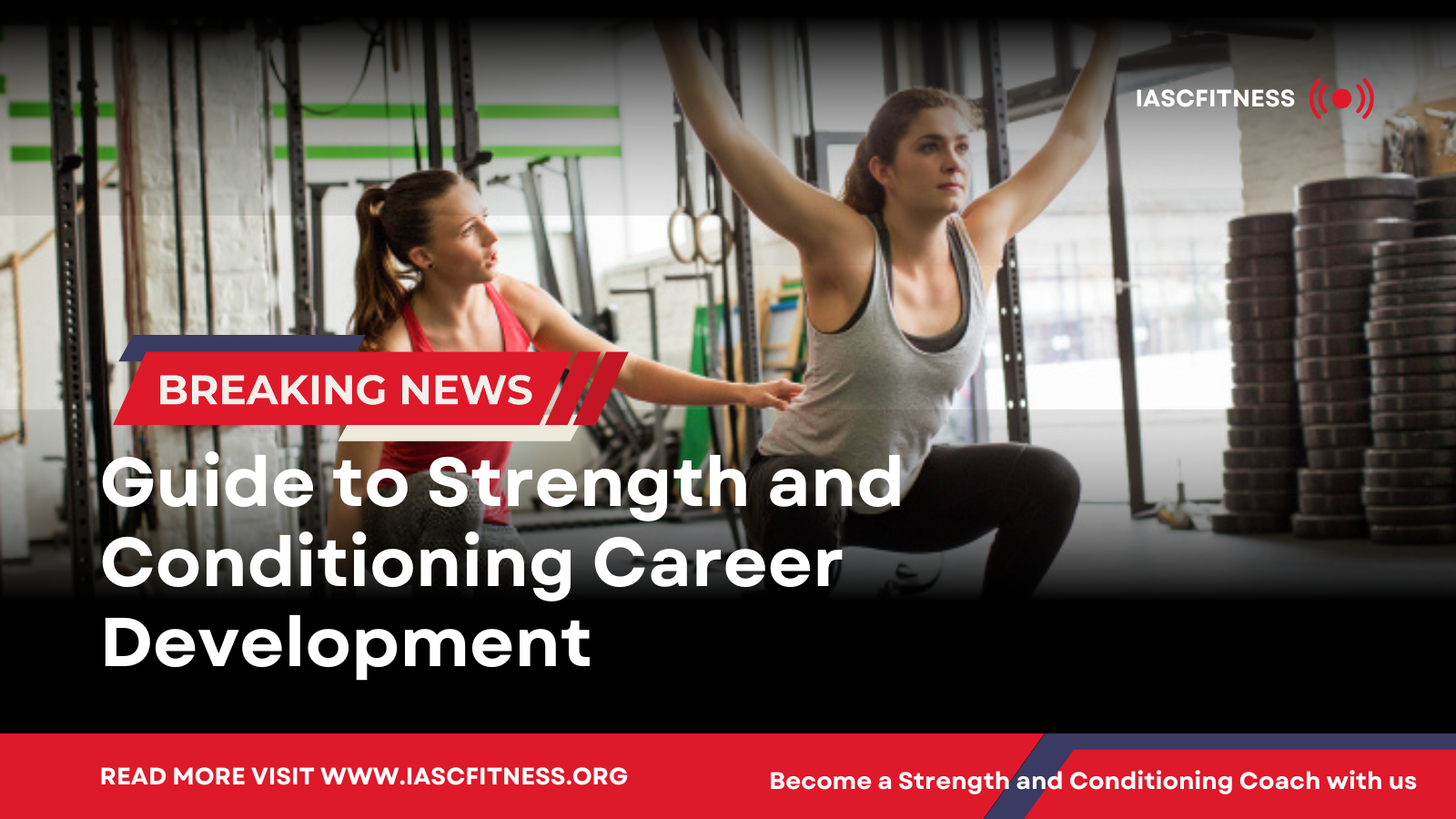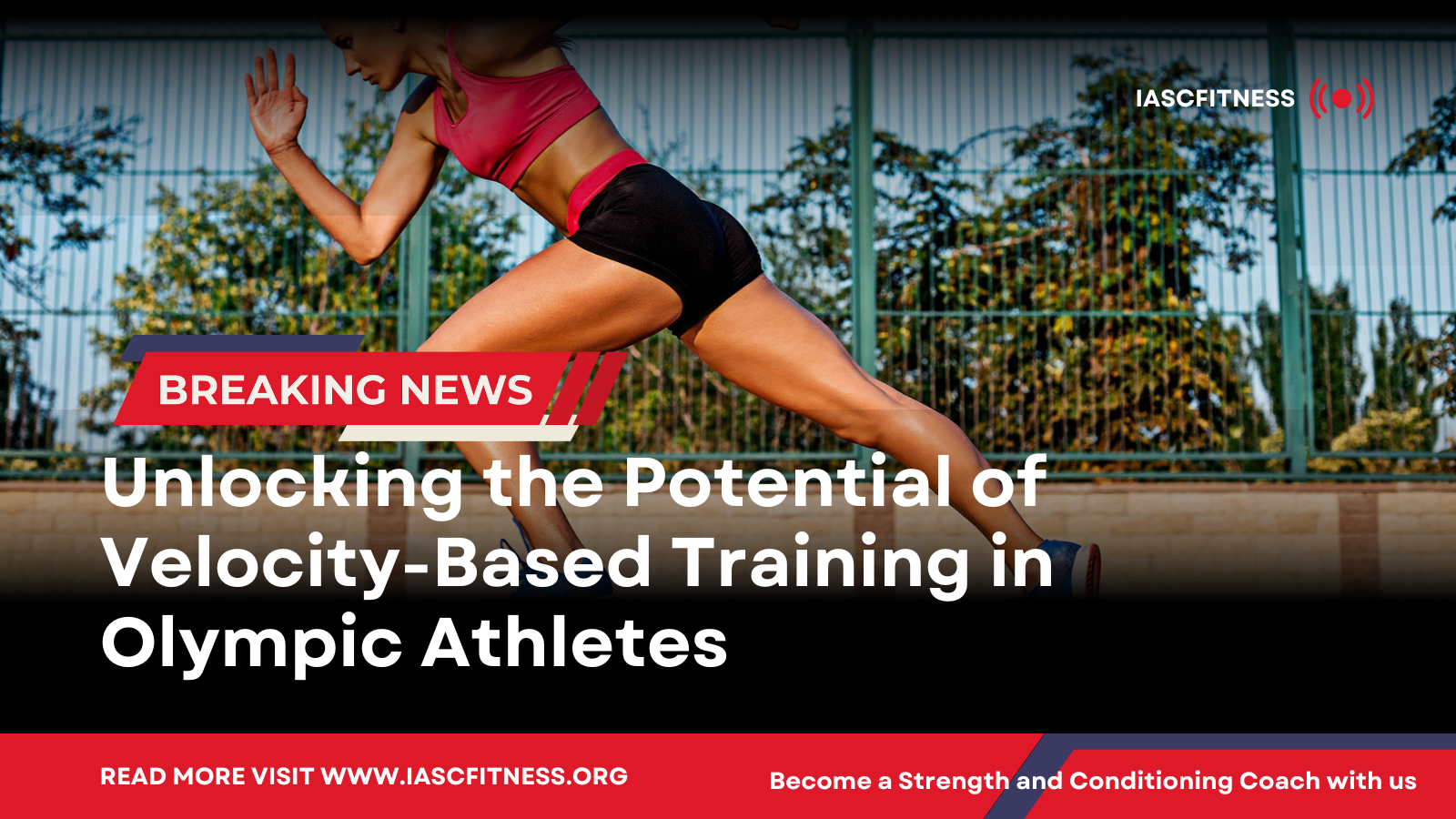A quick hack to level up your sports performance.
Many athletes are on the constant hunt to gain any edge in physical performance for both competition and training. In the last decade, contrast training has been promoted as an advanced training strategy for improving power development in jumps, sprints, and change of direction performance.
Contrast training involves a high-intensity exercise before performing a ballistic exercise with similar biomechanical characteristics (i.e., a barbell squat exercise is paired with vertical jumps [Figure 1]). In the scientific literature, this training method takes advantage of postactivation performance enhancement (PAPE) which is defined as the enhanced neuromuscular condition observed in the muscle, which leads to an increase in movement acceleration and velocity.

Figure 1. Contrast set of barbell squat exercise and vertical jump
The major factors affecting PAPE utilization are the training and strength levels of the athletes, and the intra-set rest interval (Table 1).
Table 1. Factors influencing the utility of postactivation performance enhancement in a training set

It is recommended to implement contrast training in training cycles of moderately and highly trained athletes with high relative 1 repetition maximum (1RM) strength levels (training status = professional and elite athletes; resistance training experience >2 years; lower body strength levels >1.8 relative 1RM; upper body strength levels >1.4 relative 1RM). The ability of stronger athletes to express their greatest PAPE effect earlier may be explained by the fact that they develop fatigue resistance to heavier loads after a near-maximal effort.
The rest interval between the conditioning exercise and ballistic movement influences the optimal recovery for the muscle to partially recover from fatigue but still be in a potentiated state. Previous reviews in the assessment of the temporal profile of PAPE had reported a lack of consensus regarding the optimal recovery period, with the interval ranging from 15 seconds to 10 minutes.
To implement contrast training in a training cycle, a shorter recovery interval of up to 5 minutes would be ideal for strength and conditioning coaches to execute an effective, yet practical training program when performing and incorporating PAPE.
The execution of contrast training can first be divided between the training of upper- and lower-body movements. The selection of the high-intensity exercise used is then programmed depending on an athlete’s training status and equipment availability.
Isometric push/pulls, modified olympic lifts, plyometrics and heavy resistance exercises are some examples of the exercises used. Snippets of contrast training being implemented within the training program for the Singapore National badminton team can be found in this video link. An example of contrast training sets is highlighted in Table 2 below.
Table 2. Sample upper- and lower-body contrast training sets for the moderately- and highly-trained athlete respectively

In summary, it is possible to effectively implement complex training for power development in a training cycle with the ideal combination of moderately-highly trained athletes and adequate rest periods. The key to successfully implementing PAPE into a training cycle is, taking all the above training considerations and effectively programming them for the athletes.
References:
- Cormier, P., Freitas, T. T., Rubio-Arias, J. Á., & Alcaraz, P. E. (2020). Complex and contrast training: does strength and power training sequence affect performance-based adaptations in team sports? A systematic review and meta-analysis. The Journal of Strength & Conditioning Research, 34(5), 1461-1479.
- Lim, J. J., & Barley, C. I. (2016). Complex training for power development: Practical applications for program design. Strength & Conditioning Journal, 38(6), 33-43.
- Prieske, O., Behrens, M., Chaabene, H., Granacher, U., & Maffiuletti, N. A. (2020). Time to differentiate postactivation “potentiation” from “performance enhancement” in the strength and conditioning community. Sports medicine, 50(9), 1559-1565.
- Seitz, L. B., & Haff, G. G. (2016). Factors modulating post-activation potentiation of jump, sprint, throw, and upper-body ballistic performances: A systematic review with meta-analysis. Sports medicine, 46(2), 231-240.
Julian Lim, MSc, CSCS*D @coahjulian Julian has been involved in high performance strength and conditioning for the past decade for elite, national and amateur level athletes. This journey has given him extensive skills and experience in the field of sport performance training and research development.







